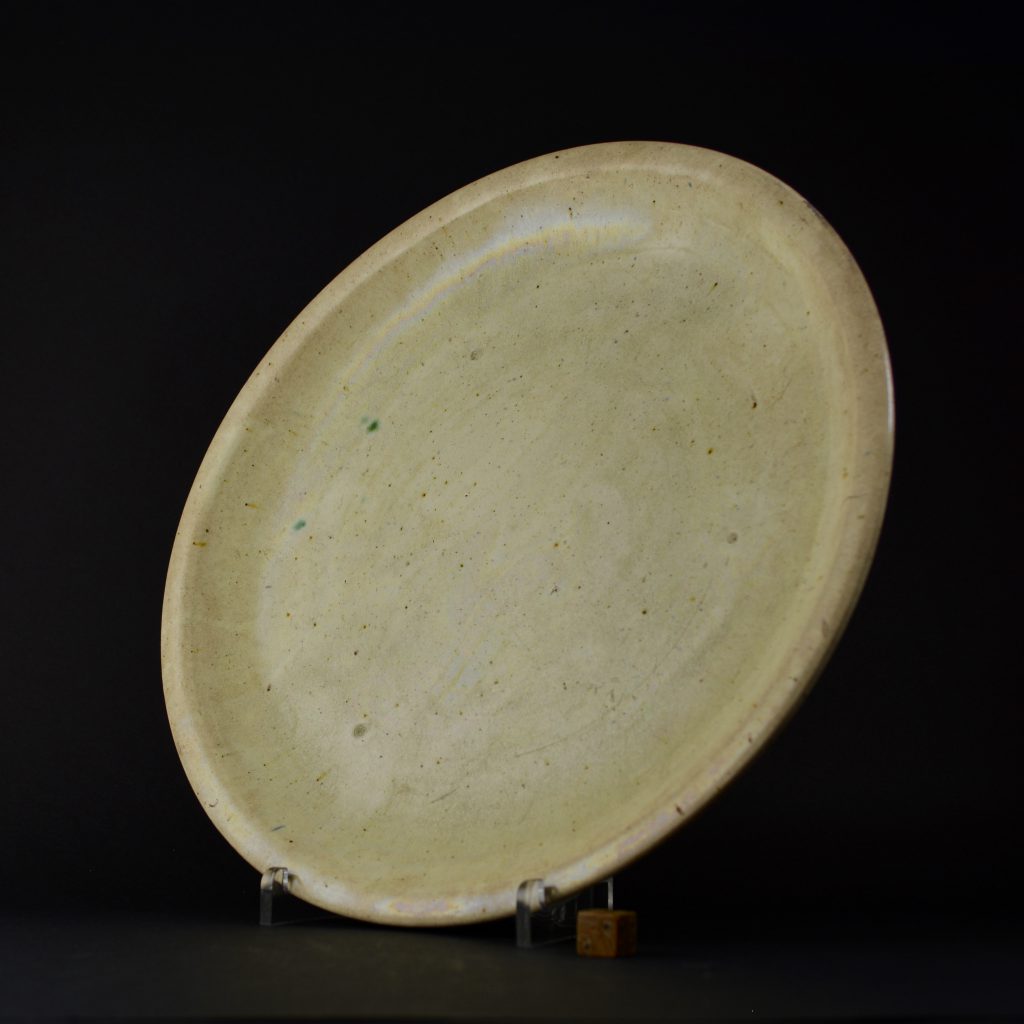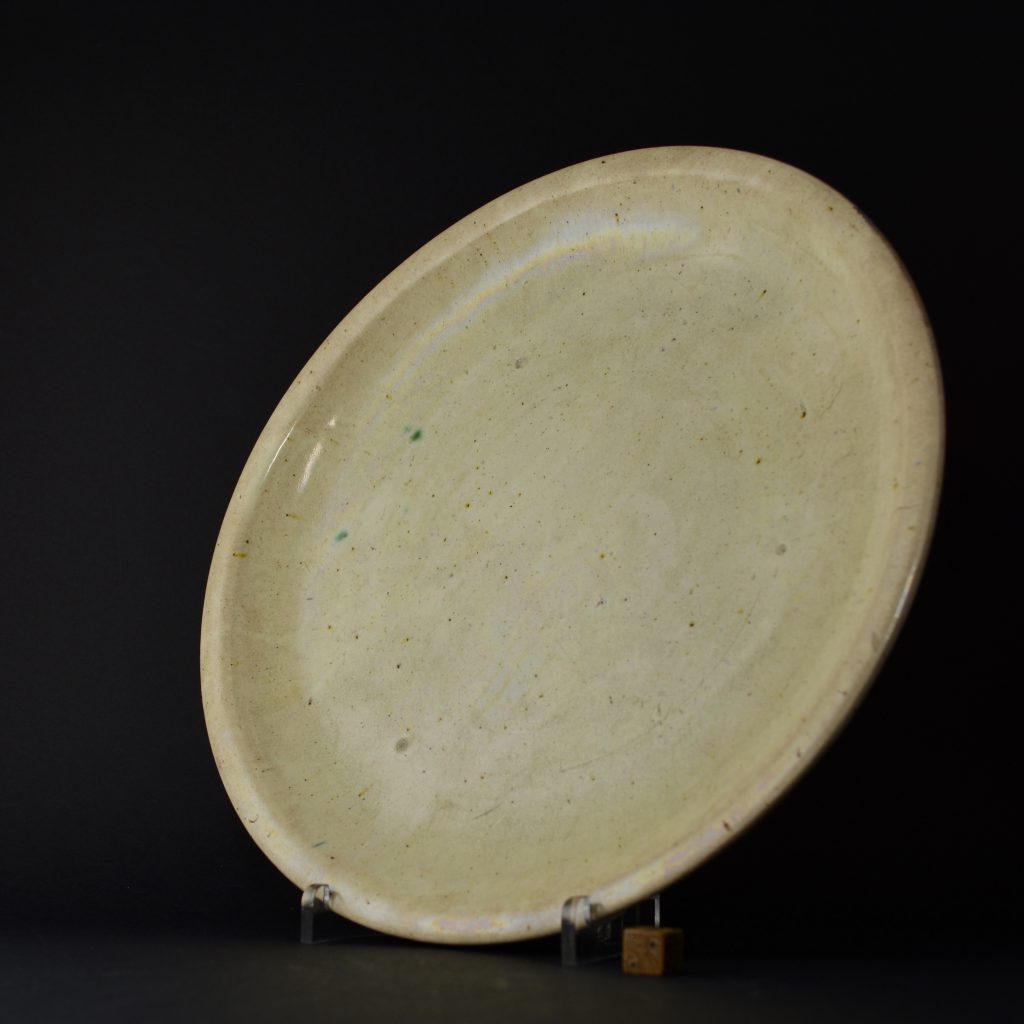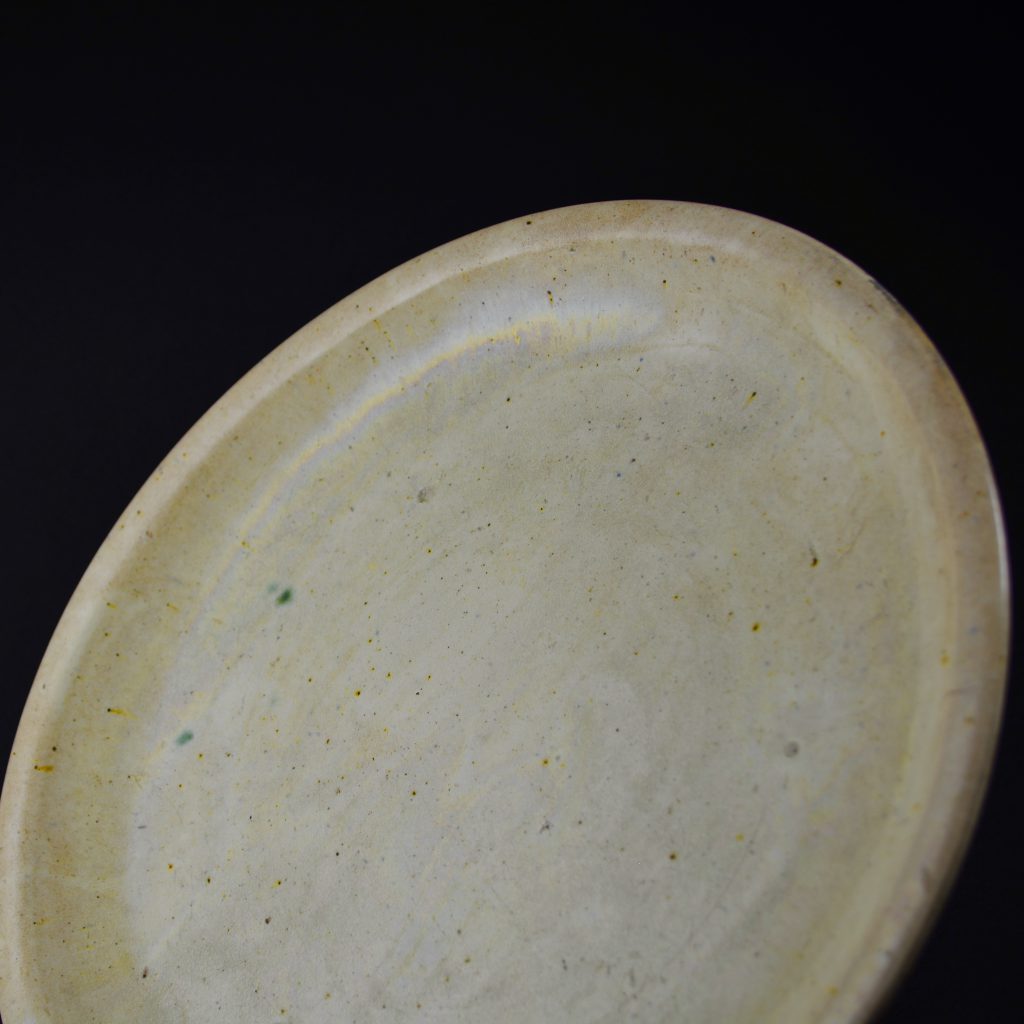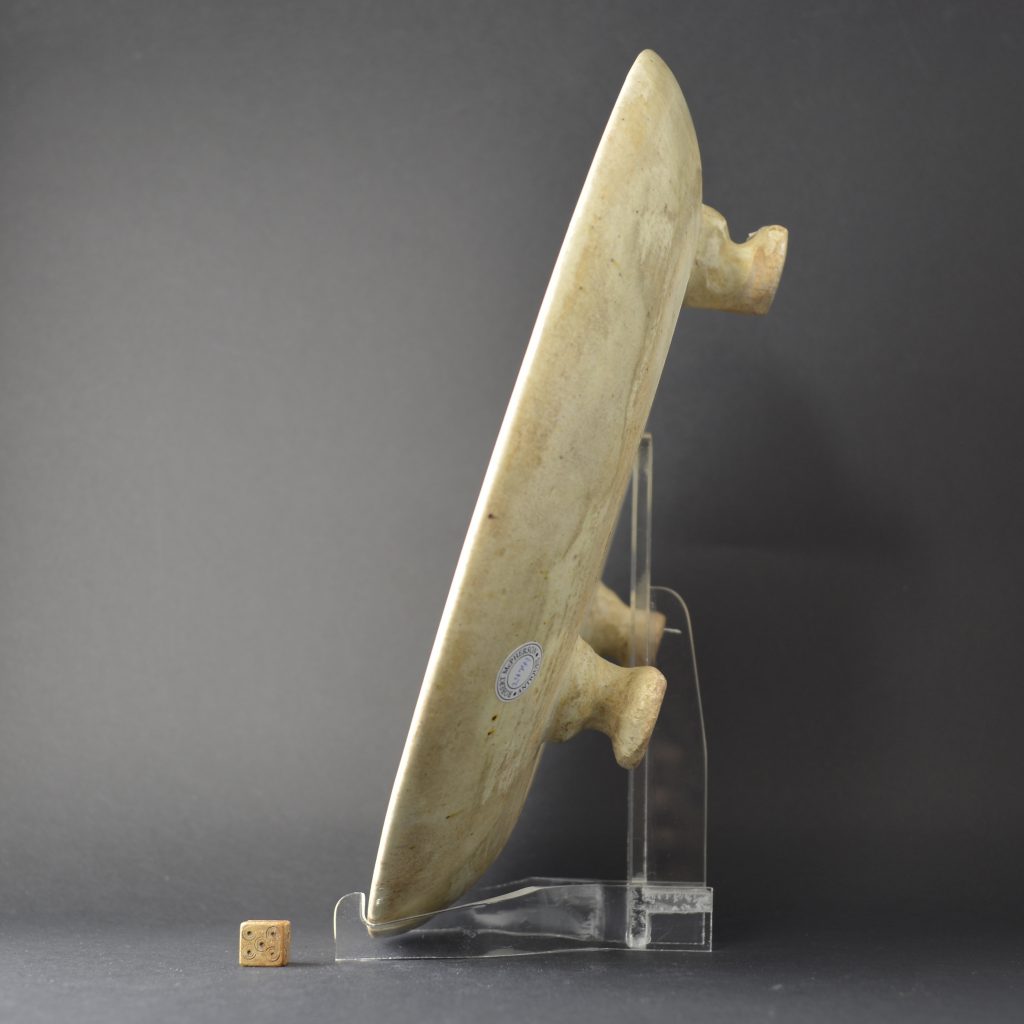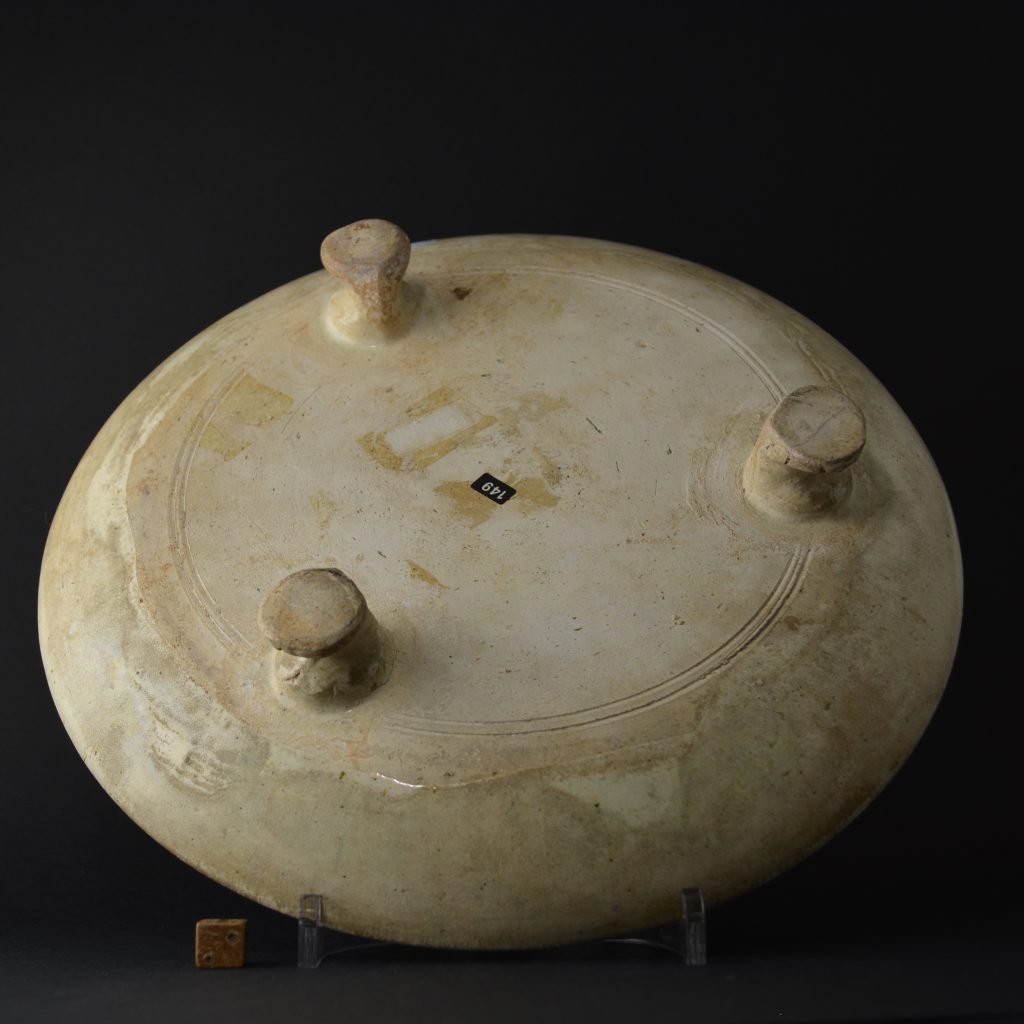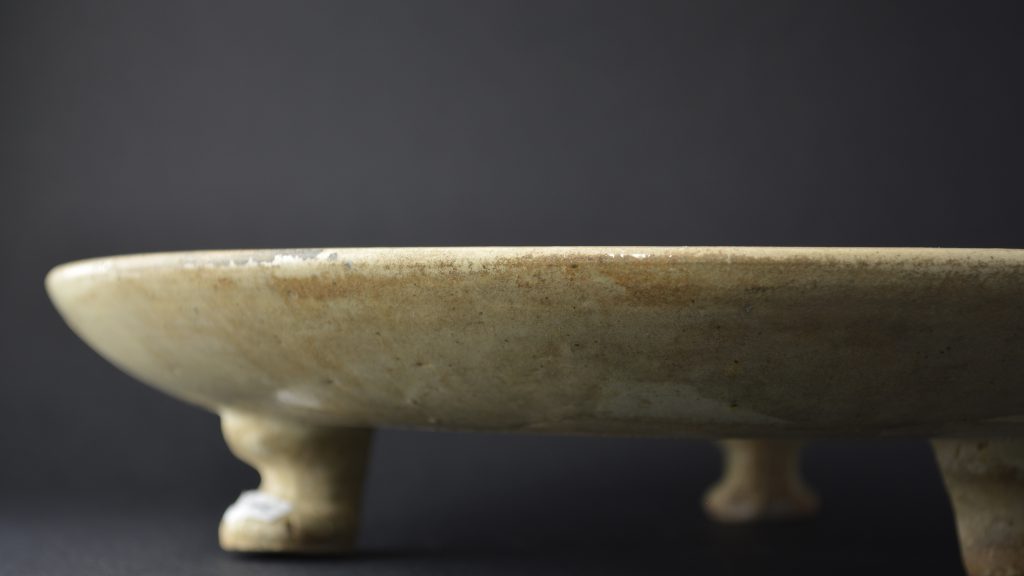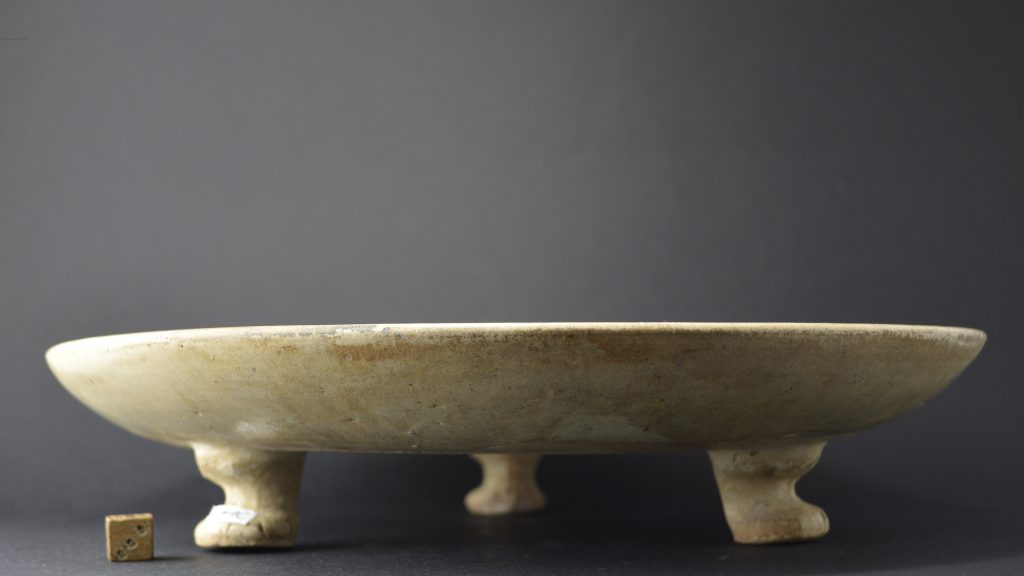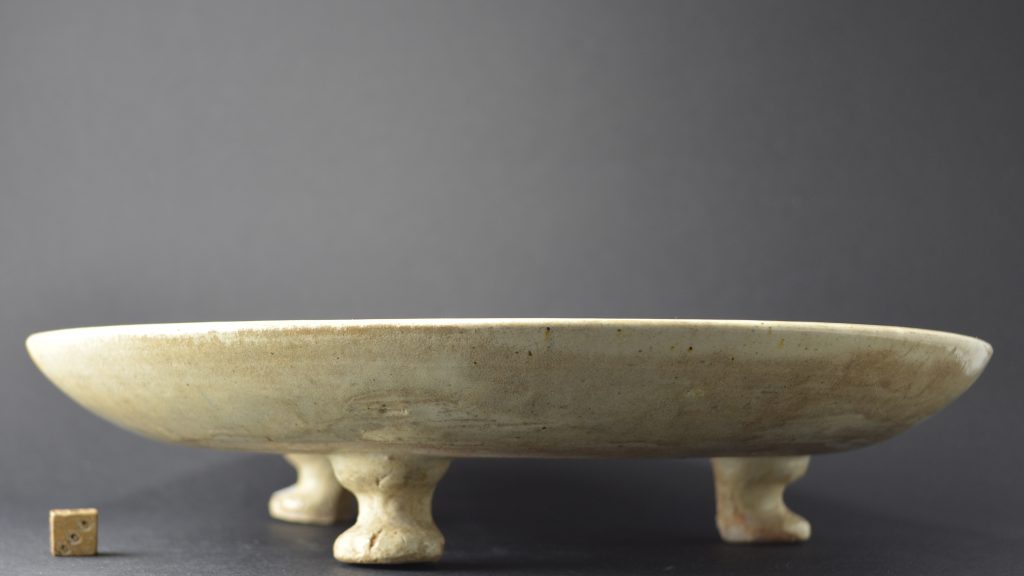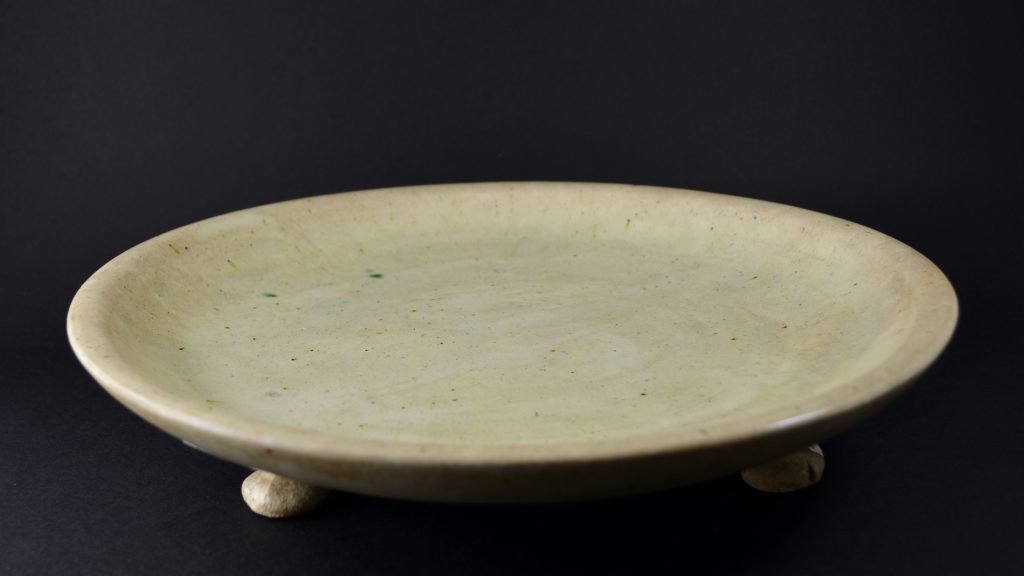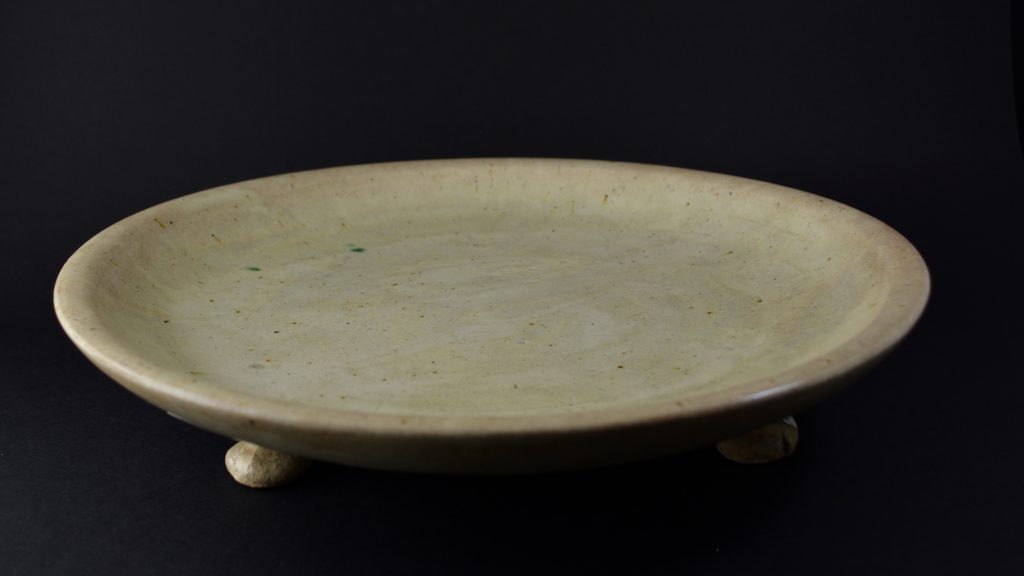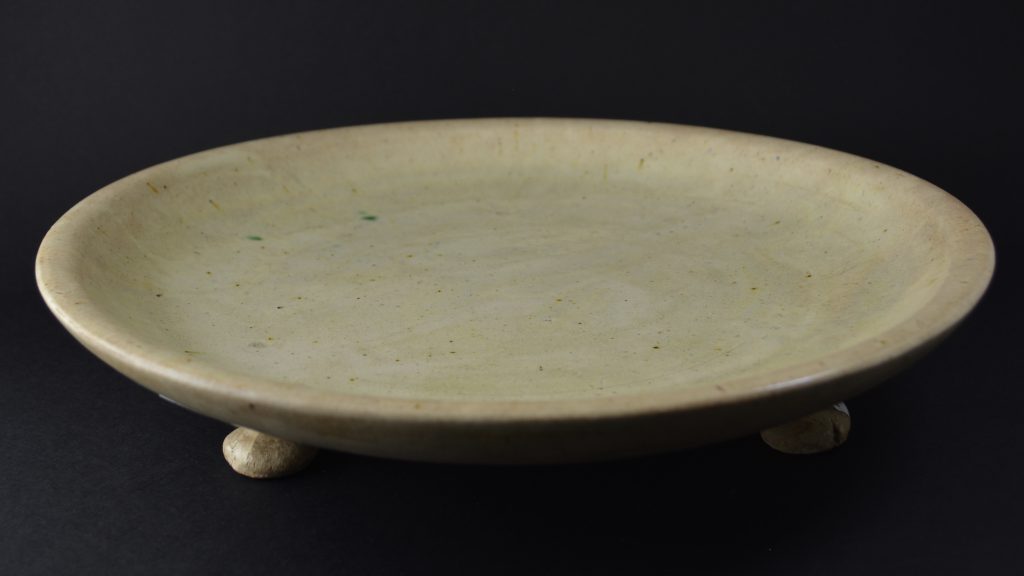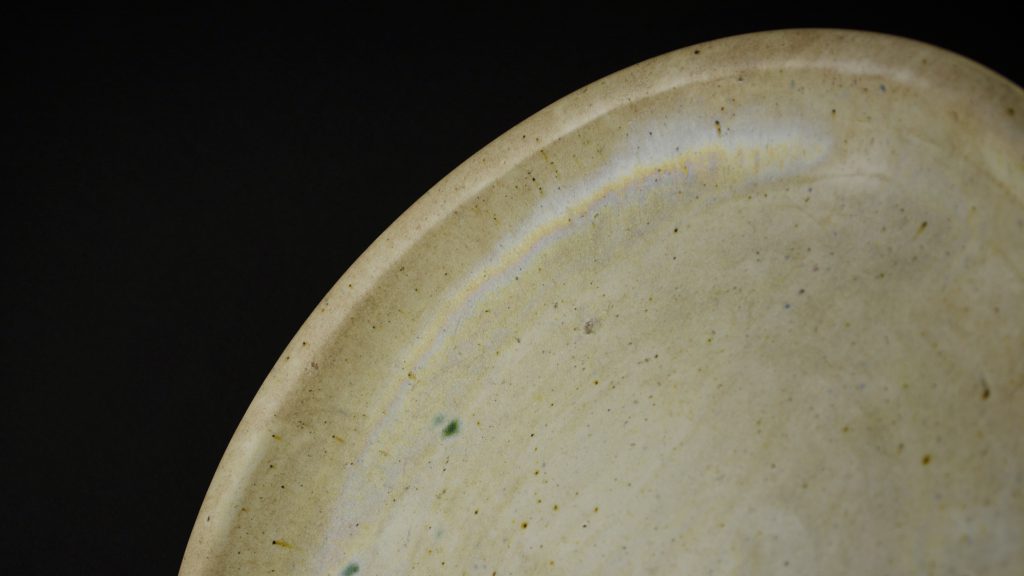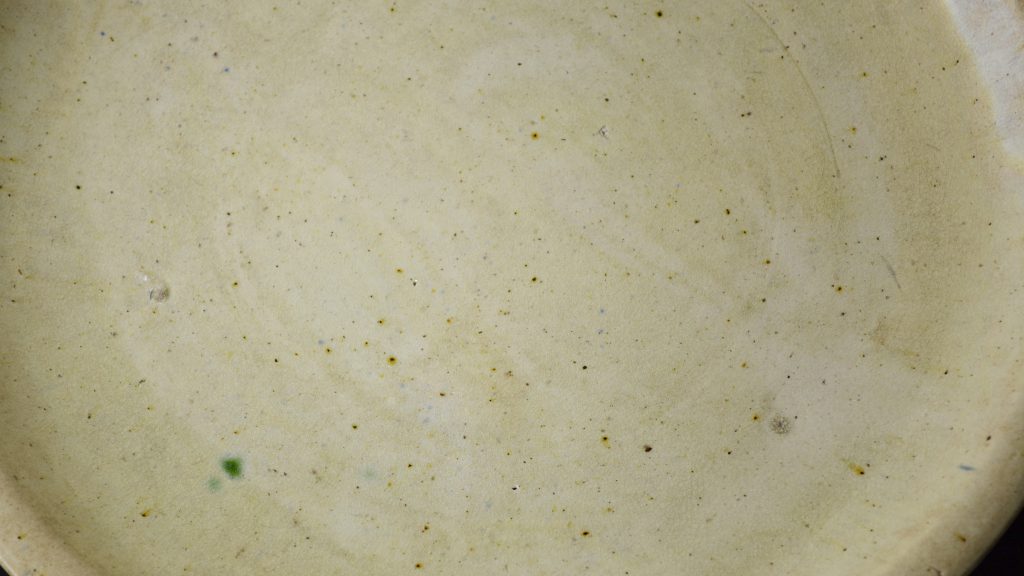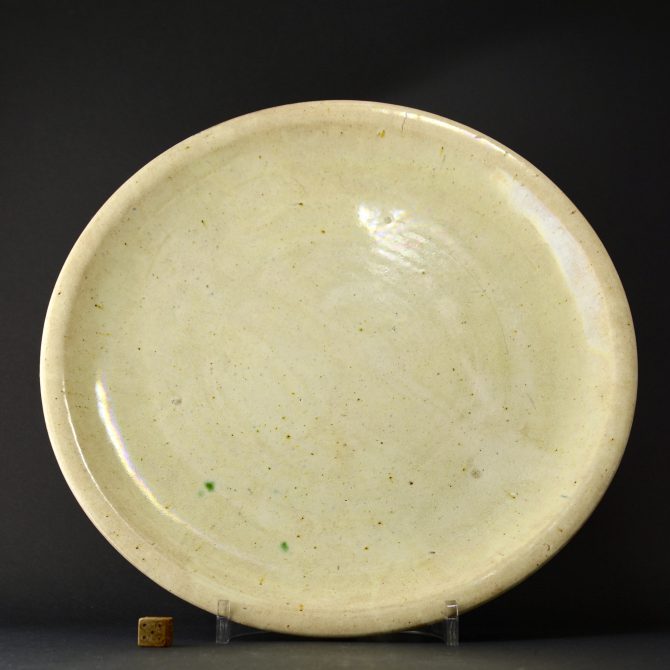
A Large Tang Pottery Tripod Offering Tray
A large Fine Tang dynasty (618-907) cream-glazed offering tray, 7th or 8th century, from a kiln in Hebei or Henan. The substantially potted tray sits on three thick functional waisted feet that are lutted onto the unglazed based, the lutting joints are glazed over. The glaze to the front of the tray has some small green glaze spots, perhaps a migration from another vessel within the kiln or tiny drips of glaze from a pot fired above. The are two minute blue specks as well as numerous tiny iron-oxide spots in the glaze which is also iridescent in places. There are three neat firing marks arranged in triangular form, probably from the firing of another pottery offering dish that sat on top of this tray in the kiln. Tang pottery offering dishes were made to present small shallow wine cups. This tray was most likely mingqi object intended internment in a grave.
SOLD
- Condition
- In excellent condition with no damage. The well of this Tang pottery dish has three marks arranged in a triangular shape, these discrete marks relate to the firing process. Another offering dish would have been placed on top of this one in the firing. Some iridescence and minor glaze degradation to the reverse.
- Size
- Diameter : 29.1cm (11 1/2 inches)
- Provenance
- From a Private English Collection of Early Chinese Ceramics.
- Stock number
- 24941
Information
Mingqi Pottery :
This piece is an example of Mingqi, objects made specifically for burial, to be taken with you to the afterlife. The `Terracotta Army` is the most famous example of this type of burial object. Mingqi objects represented people, houses, farms, granaries, livestock and indeed anything important from this world that would give you comfort and status in the next. The `Terracotta Army` were made life size and on a vast scale, reflecting the importance of the first emperor of China but most Mingqi objects were small models, far smaller than the object or indeed person they were meant to represent. Mingqi ceramics were not the only goods to appear in early Chinese tombs, objects that functioned were also buried, some of these had clearly been worn or even damaged, presumably these objects were prized possessions belonging to the deceased that might have been used on a daily basis.
